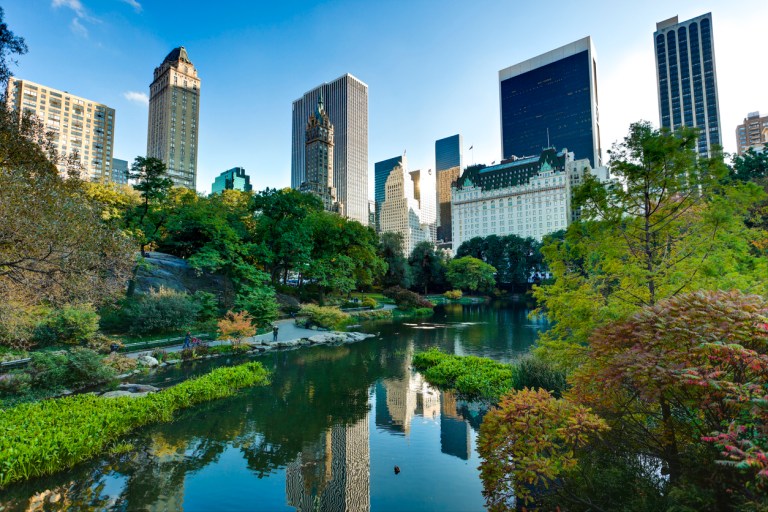Not only do trees provide natural beauty and shade to urban areas, but their leaf-filled branches could also increase the lifespan of city residents. A new study recently published in The Lancet has estimated that increasing urban tree cover — the canopy created by trees that shades the ground below — by 30% could prevent one-third of premature heat-related deaths in European cities while reducing city summer temperatures by an average of 32.72 degrees Fahrenheit.
According to a press release in connection with the study, urban environments record higher temperatures than surrounding countryside areas due to a variety of factors, including the removal of vegetation and greenery, the presence of asphalt, increased emissions, and the use of “building materials that absorb and trap heat.” Such areas are referred to as “urban heat islands.” Amid global warming, predictions anticipate that temperatures will continue to rise, with city temps continuing to outpace those of more rural areas.
The study focused on what measures could be taken to counterbalance the dire impact of rising temperatures on the health of city dwellers.
Researchers began by looking at premature deaths attributed to higher temperatures in 93 European cities between the months of June and August 2015. Cities in Southern and Eastern Europe fared the worst with heat-related deaths. Of the cities included in the study, Cluj-Napoca, Romania, was the worst for heat, with 32 premature deaths per 100,000 people attributed to high temperatures.

Mortality data from the three-month span was then studied along with daily average city temperatures in two scenarios: In the first, researchers compared city temperatures with urban heat islands to city temperatures without urban heat islands, and in the second scenario, they simulated temperature reduction that would occur when tree cover is increased by 30% in those same cities.
“Our ultimate goal is to inform local policy and decision-makers about the benefits of strategically integrating green infrastructure into urban planning in order to promote more sustainable, resilient and healthy urban environments and contribute to climate change adaptation and mitigation,” said lead author Tamar Iungman.
“This is becoming increasingly urgent as Europe experiences more extreme temperature fluctuations caused by climate change; despite cold conditions currently causing more deaths in Europe, predictions based on current emissions reveal that heat-related illness and death will present a bigger burden to our health services over the next decade,” Iungman continued.
The study’s authors acknowledged that cold temperatures have a greater impact on the mortality of Europeans at present, but projections suggest that heat-related death will soon become “a bigger burden” to health services..
Funding for the study was provided by the following organizations: GoGreenRoutes, Spanish Ministry for Science and Innovation, Institute for Global Health, UK Medical Research Council, and European Union’s Horizon 2020 Project Exhaustion.
Study co-author Mark Nieuwenhuijsen emphasized the importance of acting on the findings, and that increasing green spaces in urban environments will deliver myriad benefits.
“Our results suggest large impacts on mortality due to hotter temperatures in cities, and that these impacts could be partially reduced by increasing the tree coverage to help cool urban environments,” said Nieuwenhuijsen.
“We encourage city planners and decision-makers to incorporate the urban green infrastructure adapted to each local setting whilst combining with other interventions to maximize the health benefits while promoting more sustainable and resilient cities,” he added, “especially as we already know that green spaces can have additional health benefits such as reducing cardiovascular disease, dementia and poor mental health, improving cognitive functioning of children and the elderly, and improving the health of babies.”












